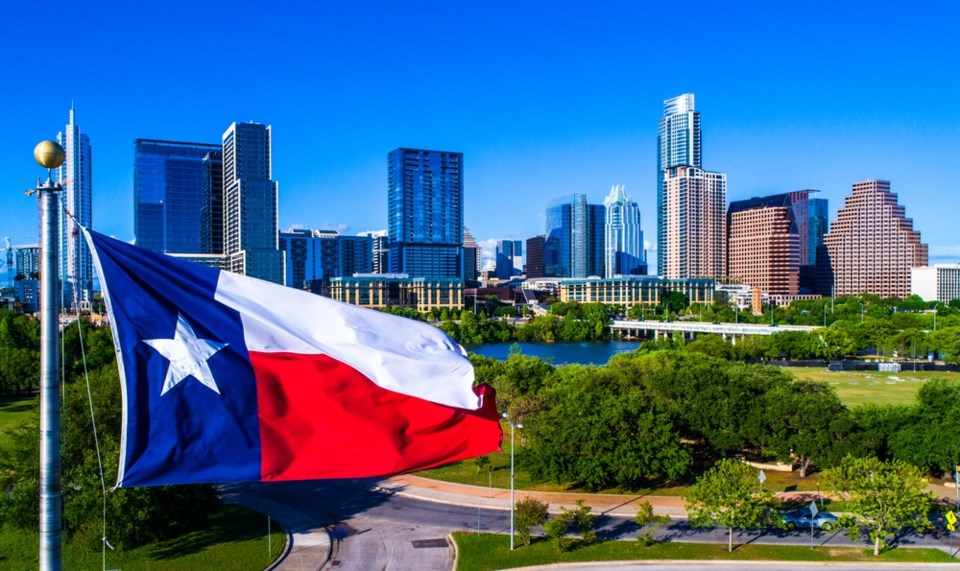As it reopens for business, Texas ranks near the bottom of Wallethub’s recent study of states offering the most support during COVID-19, appearing far behind neighboring states. Two of those states — Colorado and New Mexico — ranked in the top ten.
Wallethub analysts looked at the state’s response to coronavirus relief and medical services from March to April as well as food and housing assistance and unemployment support to determine where states ranked on the list. “The report seeks to examine how states care for people who are at risk both health-wise and financially,” Wallethub spokesperson wrote in a press release.
Texas officials don’t seem to be doing a good job.
“It’s helpful for people to know where their state stands on providing relief and medical services to those affected by the coronavirus pandemic, and how it compares to other states,” Wallethub analyst Jill Gonzalez said. “People can also use this information to find out if, and to what extent, their local authorities are offering food and housing assistance, as well as unemployment support.”
More than 26 million people have filed for unemployment, and nearly two million of those are Texans, Gov. Greg Abbott announced at a Monday afternoon press conference. He said 1.6 million of those claims have been processed.
Despite Texas ranking nearly dead last for COVID-19 testing, Abbott claimed that they are doing better as far as responding to the crisis, promised increased testing, which he claims will surpass 25,000 per day (with the private sector’s help), and assured the unemployed that they will be taken care of. They’ve implemented an additional 2,000 unemployment workers, Abbott said, to help process claims and, hopefully, respond to questions.
Critics claim Abbott is simply taking a step back by reopening Texas and chances causing a COVID-19 resurgence. Abbott used essential businesses as the model for nonessential businesses to follow, but Dallas County health officials recently reported that 77 percent of people hospitalized for COVID-19 were workers from essential businesses, according to a April 28 Dallas Observer report.
Several businesses complained that Abbott’s 25 percent capacity cap limits revenue and makes it harder to bring employees back to work. It’s also difficult to determine capacity. Is the governor basing it on fire code requirements? What about places with outdoor seating?
Other business owners were confused by Abbott’s order since it applies differently to counties with fewer COVID-19 cases, and wondered how he’ll enforce it.
Abbott doesn’t think it’s a difficult concept to grasp. “Texas is a big state and not all counties are alike and not all counties are affected by it the same,” he pointed out at the press conference.
The Open Texas manual, he said, lists additional requirements that a county with a low COVID-19 case count must meet before they can return to business as usual at 50 percent capacity.
Abbott was quick to remind businesses that his executive order is law and violating the 25-percent capacity rule and other restrictions is punishable by a fine and jail time. He also reiterated a couple of times that he wasn’t forcing businesses to reopen.
Business owners weren’t the only ones struggling with Abbott’s new order. Some employees have pointed out that they’d make more money on unemployment than the reduced hours (and pay) businesses will be offering. But if they refuse to return to work when their employers open for business, they chance losing their Pandemic Unemployment Assistance, according to the U.S. Department of Labor’s “Unemployment Insurance Relief During COVID-19 Outbreak.”
Still others claim Abbott should have done more to reopen Texas. Oklahoma Gov. Kevin Stitt allowed salons, spas, and barbershops to reopen Friday. It’s something Abbott has been reluctant to do.
As for Wallethub’s study, Melissa DuPont-Reyes, an assistant professor of Epidemiology and Biostatistics at Texas A&M’s School of Public Health, recommends state officials ask themselves, “What are the top three most effective measures taken to protect at-risk populations?”
DuPont-Reyes then indicated the top three effective measures taken by states, including listening to and prioritizing the voices of scientists and health experts, as well as taking swift action to reduce the risk of transmission for institutionalized populations. She also highlighted one of the key challenges facing states: “providing successful policy interventions for vulnerable populations during the COVID-19 pandemic.”
At his press conference, Abbott claimed Texas has taken those steps and continues to do so as they slowly reopen the economy. He also highlighted his dedication to protecting the vulnerable population. He simply asks that they make a self sacrifice and remain at home so the rest of us can return to work.
DuPont-Reyes offered a suggestion for individuals who want to help their local at-risk population: “Individuals should be writing to their local and state politicians, to request the effective allocation of resources/policies to at-risk populations and to demand mail-in voting for the upcoming elections to ensure all have access to safe voting participation.”
She also recommended that people look for volunteer and donation opportunities to local charities and nonprofits. Several of them are currently taking donations as part of North Texas Giving Tuesday, which takes place May 5.
“The local food bank is a great start but make sure to maintain all advised safety precautions such as physical distancing, hand washing, and mask-wearing during any kind of volunteer effort,” DuPont-Reyes said. “The cardinal rule is to cause no additional harm.”
For more information about the study, visit the Wallethub study.




